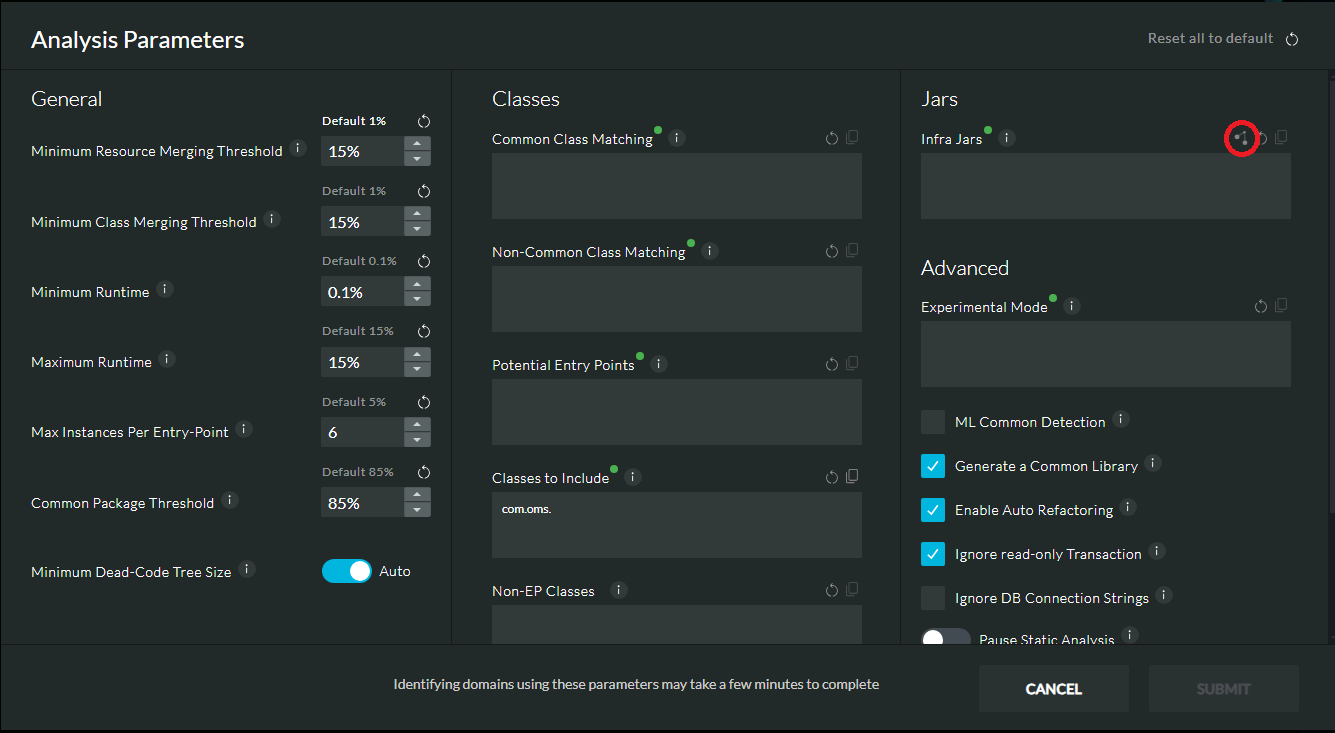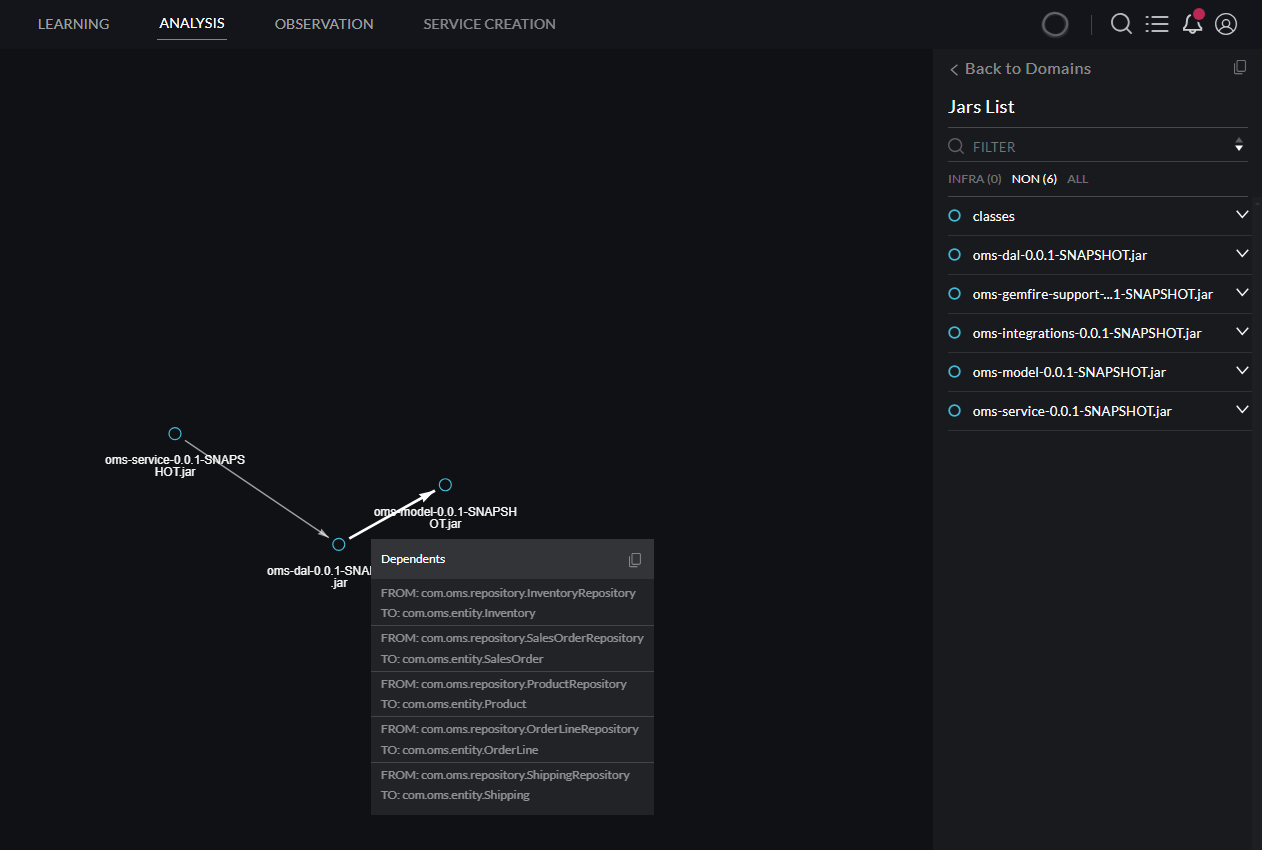
The OMS Jars
You can view the various jar files of your application and their inter dependencies in vFunction. This allows you to determine if some of the jars of your application should be marked as infra jars.
An infra jar is jar library which is part of the current application that will continue to be used as a library in the new architecture by the domains. Marking a jar as infra reduces the scope of the analysis and will result in dependencies from the domains build files to infra jars that are required by each of the domains. Typically, infra jars are general purpose libraries that are not part of any of the functional/business domains provided by the domains.
The OMS application is deployed as a war file in Apache Tomcat. To view the jars and their dependencies click Configure Parameters under ACTIONS in the left pane of the analysis page. Then, click on the graph icon above the Infra Jars field (circled in red below)

You should see a graph similar to the screenshot below. As seen in the screenshot, hovering over a line lists the compile time dependencies of the classes across the jars. Solid lines represent the existence of compile time dependencies across classes and dashed lines represent classes that are loaded via reflection (not present in the OMS example)

The right pane lists the various jar files - there are zero INFRA jars and six NON (Infra) jars.
Clicking DETAILS under a jar will open the graph for this jar in the main pane. The entry classes represents the set of classes that are ot part of any jar.
You can also click on a jar on the graph to see it dependencies and dependents.
Finally, vFunction will not permit marking a jar as Infra if it has dependencies to classes in the domains (non-infra jars). If you switch back to the Configure Parameters window, you will see a green dot indicating if the current infra jar list is OK (as there are no infra jars). If you try to add the oms-dal jar to the list, the dot will turn red indicating this jar can not be made infra and you won’t be able to do SUBMIT. If you switch to the jar graph of oms-dal, click on it and do “MARK JAR AS INFRA” a verification dialog will open notifying that this will also mandate the oms-model jar to become infra.
Let’s leave the list of infra jars empty and continue.
